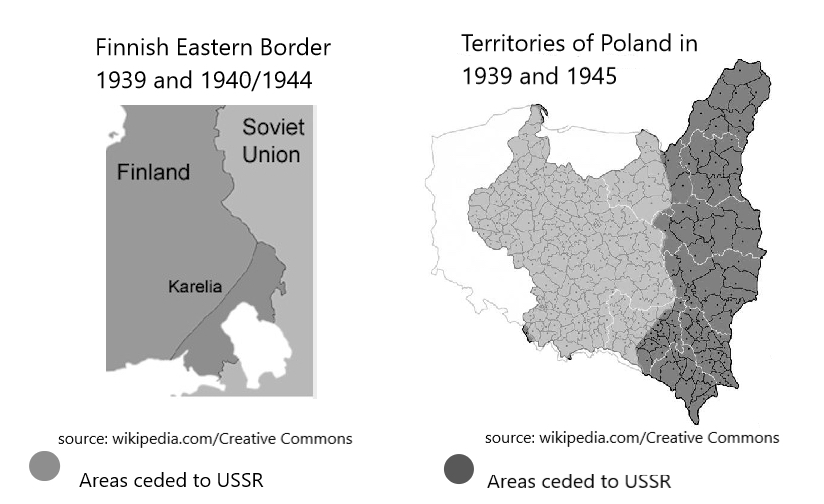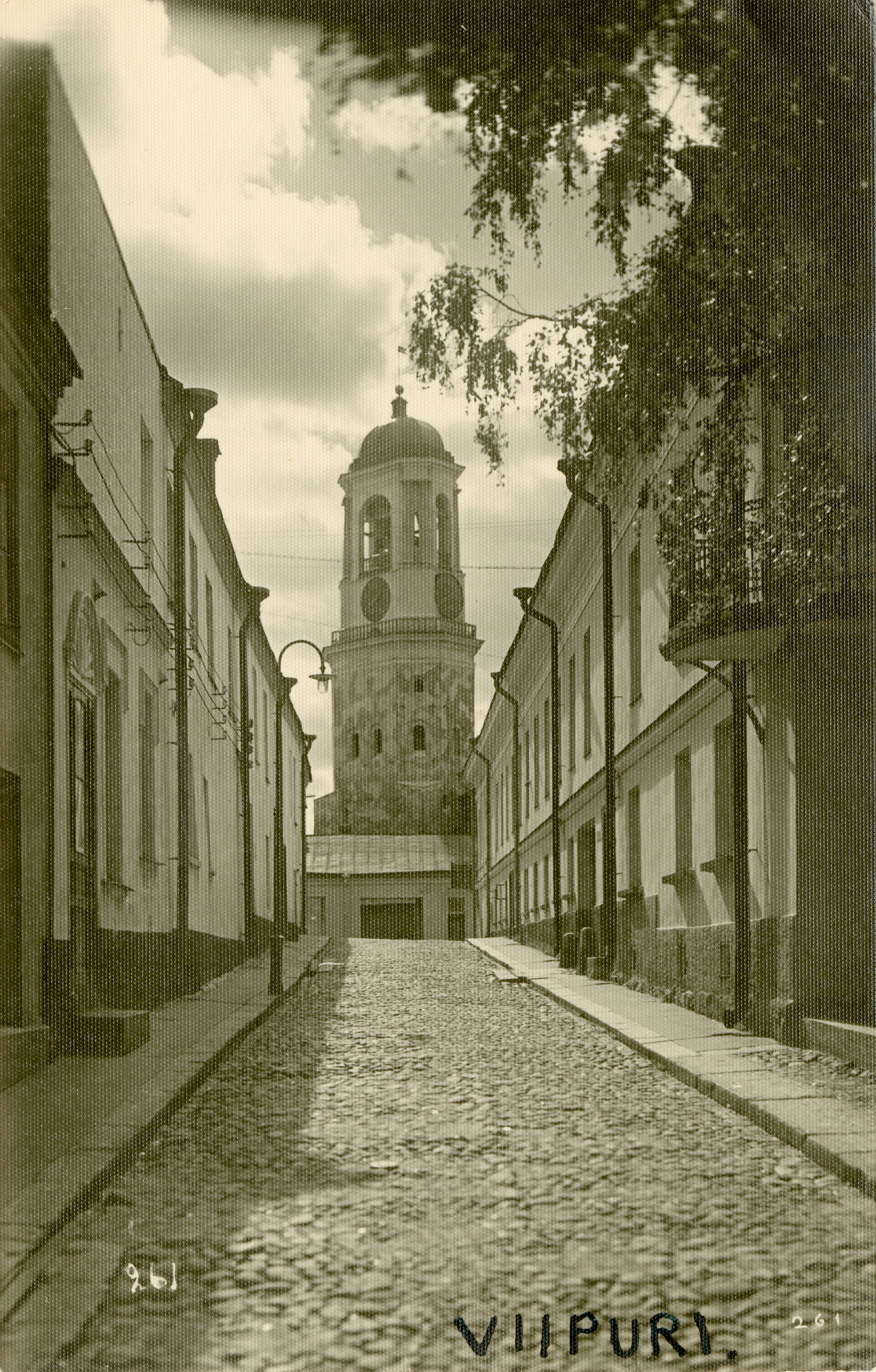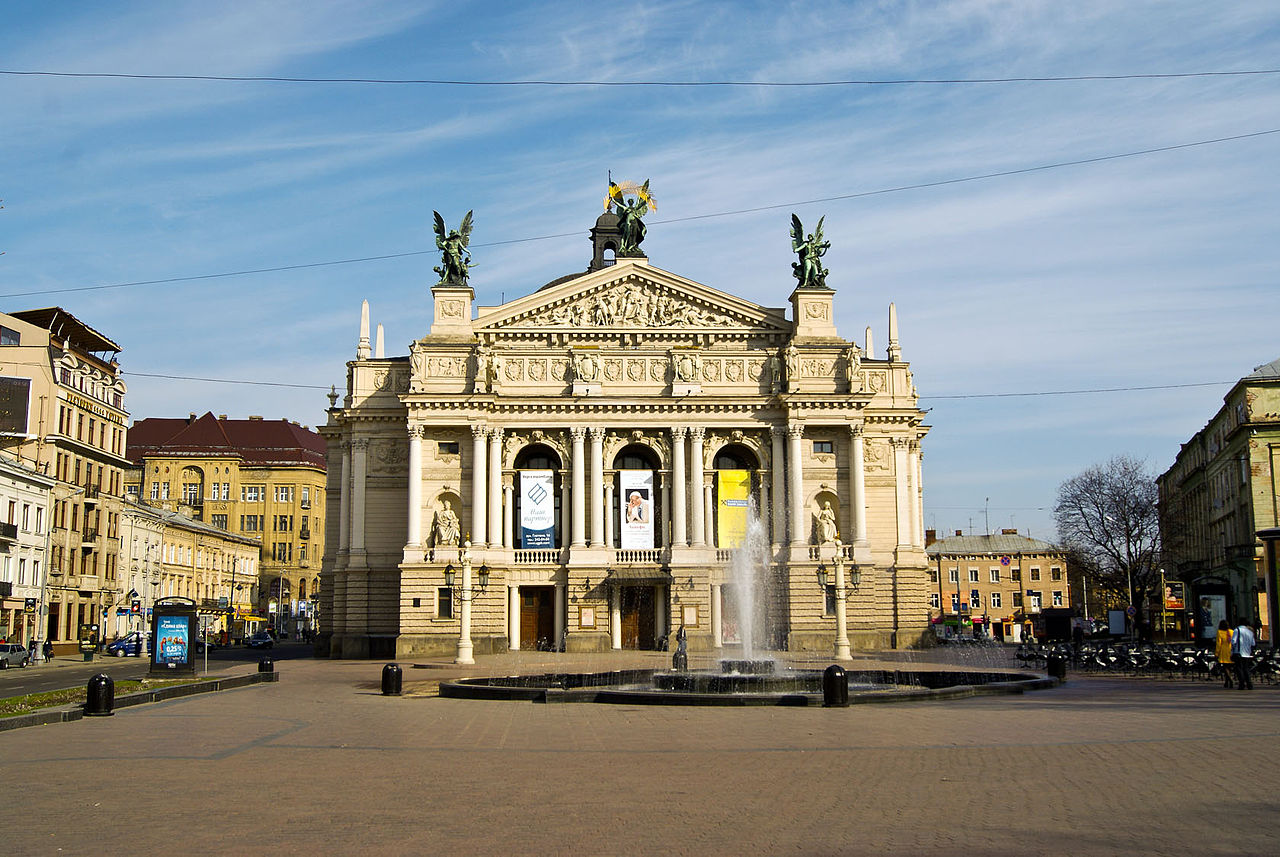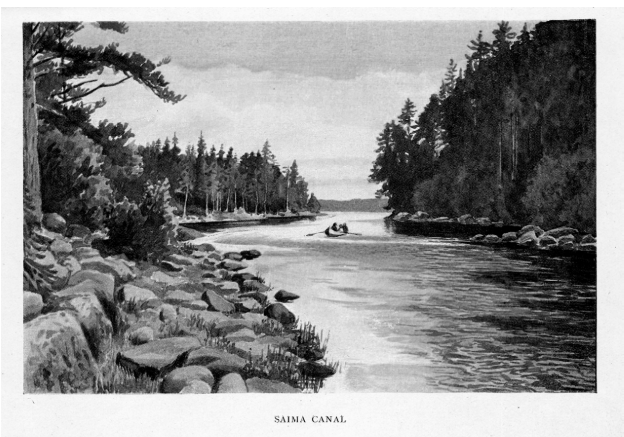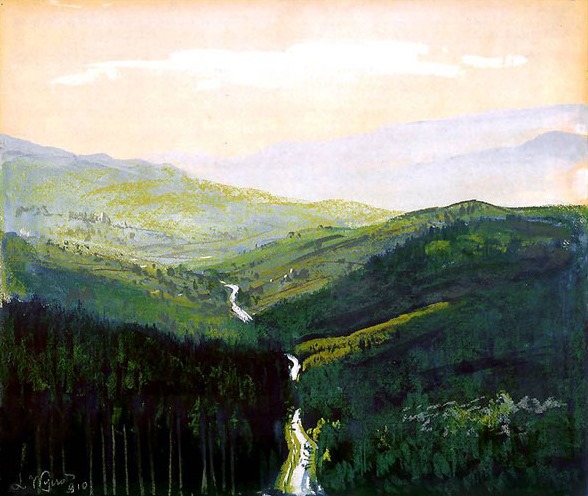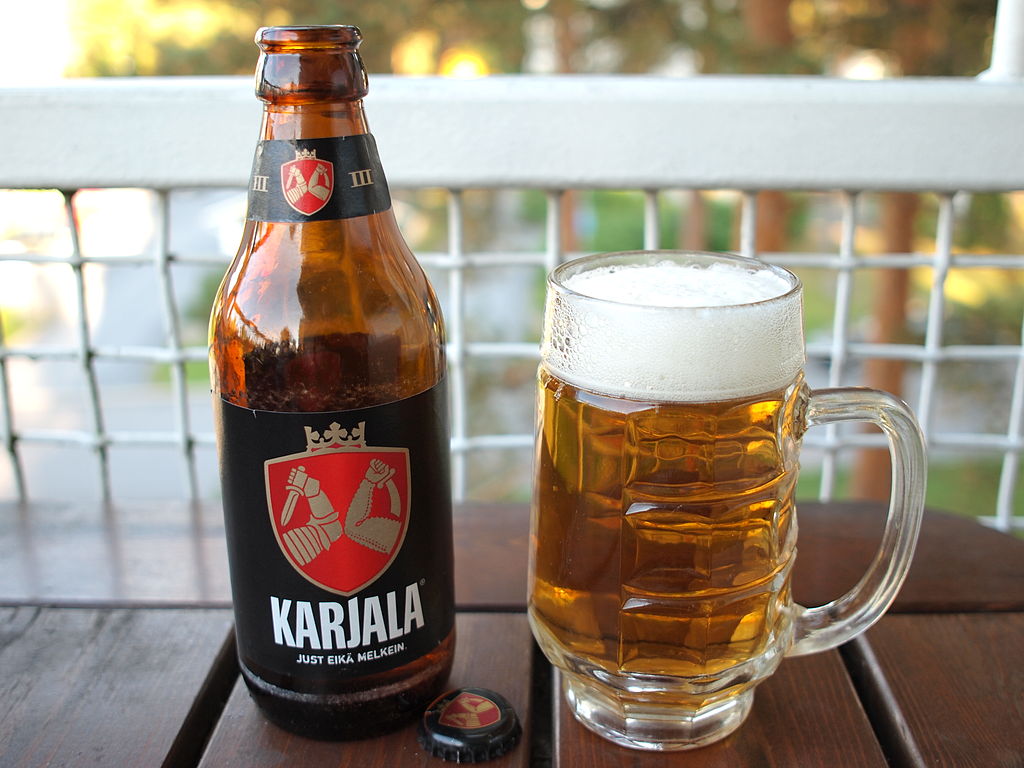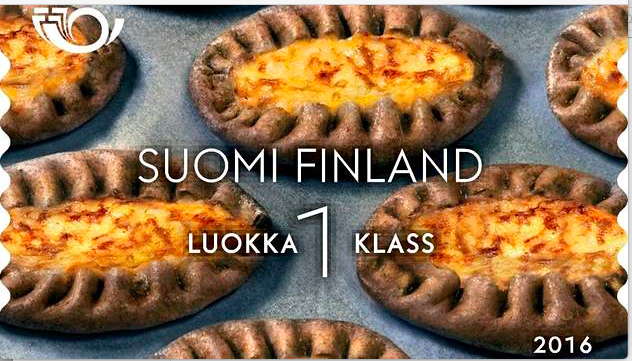I’ve spent my life travelling into my own body, into my own amputated limb. I’ve prepared the most accurate maps. I have dismantled the thing under investigation per the best methodology, breaking it down into prime factors. […] Today I can ask myself the question: What have I been looking for? - OLGA TOKARCZUK, FLIGHTS
This article examines how the remembrance of two ‘lost territories’ created by a post-war border change and forced resettlements, Kresy (a former Polish territory) and Karelia (a former Finnish territory), are framed within the contexts of nostalgia and banal nationalism, and based on post-memories. We examine the similarities between data from two countries and two separate research projects to show that certain nationalist narratives surrounding ‘lost’ or ‘amputated’ territories, which are considered unique to a given country, are in fact present in different parts of Europe.
Our aim is to push forward and expand understandings of history and memory in border areas by comparing two geographically separate ‘lost’ borderland territories, which nevertheless, as we argue, have striking similarities in the way they are remembered in the nation states which ceded them to the Soviet Union (USSR) after World War Two (WWII). Employing a comparative perspective offers valuable new insights into the transnational phenomenon of the lost and longed-for place and adds to understandings of national identity, territorial belonging, and how societies remember. We trace common perspectives and mechanisms of remembering territories which were annexed by the USSR after WWII, including the issues of forced border change and forced migrations and resettlements.
We examine, not all possible aspects of the broad notions of Karelia and Kresy, but strong points of comparison (of which we find many) between the two cases. They might serve as points of departure for further studies, combining the same or other cases. Our interview data were collected as part of two separate research projects, which utilised different methodologies. The data were compared for the purposes of this paper after data collection for our two PhD research projects had been completed. In both research projects we conducted interviews with young people, which were transcribed and qualitatively analysed using thematic content analysis (Finland) (see Braun and Clark 2006) and via a method inspired by the work of Welzer, Moller and Tschugnall (2002) (Poland). The data from Finland comprise 38 focus group interviews in eleven different cities across Finland, with a total of 325 upper secondary school students born between 1998-2001, some of whom had grandparents, great-grandparents, or other relatives who were resettled from Karelia. As around 10% of Finland’s wartime population was resettled, it is not unusual for someone to have a relative from ceded Karelia and to have a familial connection to the area. The data from Poland comprise 30 individual interviews with people born after 1989, who are part of a case study into family memory and either grandchildren or great-grandchildren of the resettled. Today, around 15% of Poles declare they have ancestors from Kresy (CBOS 2012).
The focus group interviews in Finland were conducted in 2017. During the interviews participants were asked the following questions: “What do you know about Karelia?”, “What comes to mind if you hear the word ’Karelia’?”, “Where is Karelia?”. Anonymous written summaries and feedback forms which participants wrote and completed at the end of their interviews were also included in the analysis. The interviews in Poland were conducted during fieldwork in 2018 and 2019. The most important questions put to the informants (although the interview had also a free form, similar to narrative interviews) concerned broadly understood ideas related to Kresy and what role it played in their family history. Is Kresy the mythical place that Grandma talked about? Or has the informant personally visited and experienced Kresy?
Though Karelia is a transnational region spanning the Finnish-Russian border, ‘Karelia’ in the context of this paper refers to the area which became part of the USSR, and is now part of Russia, due to the Finnish-Russia border being moved westwards after WWII (see Fig. 1). This is the usual Finnish understanding of the term ‘Karelia’ (Browning and Joenniemi 2014, 2). Post-WWII Karelia was on the Soviet side of the ‘Iron Curtain’ whilst Finland remained on the other side. Around 407,000 Finns (about 10% of the country’s wartime population) left ceded Karelia and resettled in Finland (Savolainen, 2017, 170). The area called Kresy (Borderlands) refers to a transnational territory that after WWII was divided into three countries: Lithuania, Belarus and Ukraine, each of them being a Soviet Republic within the USSR (see Fig.1). The name Kresy is derived from the territory’s peripheral location in relation to more central parts of Poland, especially when referring to the Polish-Lithuanian Commonwealth and the post-1918 borders of the Second Polish Republic. After the post-WWII border shift, ‘Kresy’ refers specifically to the territory annexed by the USSR and left behind the Curzon line, which today demarcates the eastern border of Poland. Around two million people were resettled from Kresy to various regions of Poland in its post-war shape.
The loss of Karelia and Kresy caused ‘territorial phantom pains’, the nation-state equivalent to the pain caused by a lost limb (Billé 2014), and national trauma due to the fact that these both territories were conceptualised as central to national identity (for Karelia, see e.g. Laine and van der Velde 2017, especially 67; for Kresy, see Kolbuszewski 1995). The common understanding many pre-war Finns and Poles had of the ‘natural’ shape of their nation state included the territories of Karelia and Kresy and the idea that Karelia should ‘rightfully’ be part of Finland, and Kresy part of Poland has persisted in some circles and has been expressed in the media and other narratives despite the fact that these territories have now been severed from their respective national ‘bodies’ for more than 70 years (Laine and van der Velde 2017, especially 69-71; Paasi 2016, 25; Głowacka-Grajper 2015, 164-182; Traba 2009, 290). Though Karelia and Kresy are no longer part of the Finnish and Polish nation states, “on an emotional level, they remain ‘attached’ to the national body” (Billé 2016, 18). The ,territorial phantom pains, caused by these lost territories may prompt “nostalgic moods manifested in cultural life and sometimes poured into powerful social movements. These movements proclaim irredentist slogans – reunion with the state, whose part this territory was in the past, or a restoration of previous borders” (Kolosov 2015, 37).
The memory scholar Jeffrey Olick has recently written (2018, 207) about the problematic memory of state-led non-legitimate violence that “violated rules and norms, integrity bodily and moral” and, we might add, cartographic. The memory of the cartographic violence done to the national ‘bodies’ of Finland and Poland by the USSR via the re-drawing of borderlines and the ceding of territories is one which now lives on via post-memory. Post-memory describes the way those who did not actually experience an event can still ‘remember’ it via “imaginative investment, projection and creation” (Hirsch 2008, 107). Post-memories take the form of stories and images of past events which can approximate memory in their affective force, expressed by the generations who come after (ibid 106,109). Francesca Cappelletto writes (2003) that it is not necessary to witness an event to attach certain emotions to it. What links both witnesses and others – for example younger generations – to past events is a shared emotional meaningfulness. This article examines whether today’s young people in Finland and Poland, who are several familial generations removed from those who experienced the loss of Karelia and Kresy, still feel an attachment to their countries’ former territories.
Apart from post-memories, it is the feeling of nostalgia that enables us to better understand how the imaginaries of lost territories are processed and preserved within national frames. Nostalgia is a painful longing for home, a home that may no longer exist or perhaps never existed (Boym 2001, xiii). Nostalgia allows descendants of those who actually lived in Kresy and Karelia before the war to preserve a particular understanding of what those areas were. Both Kresy and Karelia are imagined within a nostalgic frame as places which were ‘natural’ and ’timeless’, which preserved the ‘old ways' and traditions: “the joyful Karelian culture (...) boasts a thousand years of history. Karelians have always lived on the frontier, and have managed to maintain a sound faith in life and strong bond with their culture that was born in the heart of age-old forests, hills and great waters” (Karjalan Liitto ry 2019). The myth of Kresy as ’sacred‘ had already developed in the 15th century (Beavois 1994, 94). The image of people from Kresy is comprised of people living the ‘natural way’, being direct and polite, cherishing the traditional values of patriotism (Saniewska-Mochowa and Zielińska 2007, 168-172). Popularised images of the main urban centres of Karelia and Kresy (Viipuri and Lwów) and of rural Karelian and Kresy landscapes added to this nostalgic construct before and especially after WWII (see Figs 2, 3, 4, and 5)
The framing of these areas as ‘eternal’ parts of the(ir) nation states is of interest as the ’bodies’ of Finland and Poland which included Karelia and Kresy were actually short-lived. The shape of the sovereign nation state that is memorialised and that still ‘hurts’ due to the territorial amputatation only existed between the First and Second World Wars. Poland regained its independence in 1918 after having being partitioned in the 18th century. Finland declared independence from the dying Russian Empire in December 1917 and its borders were ratified in 1920.
It is important to ask, why the notions of Kresy as inherently Polish and Karelia as inherently Finnish persist. The idea of preserving the Polishness of, and Polish rule over, Kresy, appears to have been transmitted across many generations, until the present time. And perhaps in this case Polishness does not always mean material development but cultural dominance. This discourse claims that as the dominant cultural trait of Kresy ’Polishness’ , has to be preserved, cherished and given deserved attention. There are institutions, such as the Polish National Heritage Institute whose aim is to preserve the Polish heritage of Kresy, such as its buildings and cemeteries, and also to preserve and publicise the personal memories resettled Poles have of the area (Bernat 2016). In Finland, the Finnish Karelian League aims at preserving Finnish Karelian culture (Karjalan Liitto ry 2019). There are also organisations and individuals who campaign for Karelia to be returned to Finland. For such campaigners “Karelia belongs to Finland”; they are “utopian idealists, who deliberately use the past to further their political objectives” (Fingerroos 2012, 501).
When comparing the post-memories of Karelia and Kresy, we seek to avoid methodological nationalism, where social science imaginaries are territorialised and limited to the boundaries of a nation state (Wimmer and Glick Schiller 2002, 308). Transborder and transnational phenomena are thus obscured or invisible because the narrative is confined within state borders (ibid). This appears to be precisely the case in common narratives of post-WWII migrations and border shifts. Whilst these are sometimes analysed from the perspectives of neighbouring nations (see e.g. Halicka and Mykietów 2011), studies encompassing wider perspectives are still scarce. This paper adopts this wider perspective by comparing two geographically separate cases, which are, however, often framed in the same way as unique, national traumas for the nation states involved.
The similarities between the Finnish and Polish cases appear most visible when comparing empirical data collected independently in two different research projects. We understand Karelia and Kresy as (phantom) territories key to national territorial understandings in Finland and Poland which were ‘severed’ from their respective national ‘bodies’ by post-WWII borderlines. We want to know how young people in Finland and Poland today feel about these ‘lost limb’ territories. Here, we link our theoretical framework with our results from focus group interviews with young people in Finland who discussed Karelia and interviews with young people in Poland about Kresy.
In Finland, it was found that memories of Karelia have been transmitted down the generations via both narratives within Karelian evacuee families and via national media narratives. For some participants Karelia had personal significance and they appreciated discussing it in the focus group: ”the Karelia area is [...] a strong part of my identity and it was nice to hear more about it and that it also interested others [in the group] so much.” When discussing Karelia, the participants often responded from within a Finnish national framework: “[Karelia] was a big part of Finland and it was lost in the war and during the war many people came from there, here to Finland.” They also showed an awareness of Karelia’s historical importance for the Finnish nation: “Karelia had been, like, a really important area for Finland for the whole of Finnish and Swedish history and there’s a lot of our, like, ancient history there.” They understood Karelia as a territory which “has been for quite a long time this, like a debated area on the border of Finland and the Soviet Union slash Russia.”
What becomes important for young people in Poland, who at some point in their lives learn about their Kresy ancestry, is the sense of belonging and sharing a common past. This creates a common memory regime for a wider group. Family storytelling, with the use of the internet and other media, is supplemented with other content, enriching the knowledge people have already received at home about the past and modifying the narrative:
For me, Kresy is this most beautiful part of Poland [our emphasis]. For me, for my ancestors. There, it was necessary to testify each day that you belonged to some national group, that there were some common values, that we wanted to live in our own country, because if our country, our army was missing, we were slaves at best, and most often victims of genocide.
The importance of family storytelling for people expatriated from Kresy began after WWII when the memory of the resettlement was suppressed and the only way to preserve the family history was through personal memories. The role of witnesses is particularly important in the process of developing the narrative about Kresy (Jakimowicz 2014) and also when depicting the opposition of the Polish people and Others (Wylegała 2015, 3-4). For example, one of the most interesting cases of storytelling about Kresy is a situation where a family member supplemented their professional knowledge of history with that of a witness:
It began with how my mother taught history at a secondary school and gave private lessons. And whole classes came to our home, talking above all with Grandma. And Grandma went to this large room, she had a chair, and they talked about the war, about Kresy and Siberia.
However, taking on this emotional attitude has several more reasons than just direct memory transmission. Kresy is sometimes referred to as part of Poland, with Polishness as its dominant cultural trait and what is important when analysing post-memories of Kresy is what is defined as ’ours’: our cities, our past, our lands, our people. Although Eastern Borderlands comprised vast lands from the Baltic Sea to Galicia, the area that is most often referred to is the city of Lviv (Lwów in Polish). Additionally, Lviv is also the place that is most often pointed out as lost and being inherently Polish even though Poles accounted for about 65% of all its inhabitants.
In Finland, participants often used the national ‘we’ of Finland to describe the loss of Karelia; they include themselves in the group who suffered the loss, despite being born generations later. A clue is given as to why: one participant said she heard the slogan ‘Return Karelia’ from her father, which is being handed down and so might further a sense of continued Finnish ‘ownership’ of Karelia. Though interviewees repeated the slogan ‘Return Karelia’, often as an immediate response to being asked what the word ‘Karelia’ made them think of, they generally did not express a strong desire to actually ‘return’ to the ceded territory, or to have it ‘returned’ to Finland. The majority of the young people who participated in the focus groups, seem not to have inherited a strong personal sense of loss or grief over Karelia: this indicates a ‘faulty’ or incomplete transmission of the memory of Karelia across generational borders.
Both in the case of Poland and Finland, participants expressed the notion that people did not talk about Kresy and Karelia. Some participants in Finland felt that more acknowledgement of Karelia’s significance was needed, as expressed by the idea that it is “talked about too little” or the opinion that “It was interesting to hear about Karelia because it’s rare to meet people who talk about it.” Among the Polish interviewees, Kresy seems both close and distant. It is distant in terms of geography but also close because it forms the backbone of family histories. What is important when looking at personal memories is that the issue of Kresy was neither a subject of the pre-1989 Polish historical policy (because of the above-mentioned political reasons) nor after 1989. Because of this, even after the Soviet Union had collapsed, the persistent idea of a ‘treasure chest of memories’ has remained. This is the most important aspect of both memories and post-memories of Kresy – the sense of oppression, the need to pass on the story and the feeling of underappreciation. Many think that not enough is written and spoken about Kresy and in one of the interviews, a man, aged 26, who is deeply involved in events commemorating the fate of people resettled from former Polish Eastern Borderlands, points out: “If this truth [about post-war resettlements] was present in public life, then perhaps we would not have been needed in this area. But it still does not exist and if it was not put into prison in the 1990s, it does not mean that the truth in public life was already present.”
Participants in Finland associated ‘Karelia’ with certain foods, which they regularly come across in daily life: “When I hear [the word] ’Karelia’, I think of all Karelian food [...] Like Karelian pies, we have them at school today actually,... and stews”, beer and pop songs. Such seemingly banal references made by participants to Karelia as a presence in their everyday lives should not be rejected or ignored because these can be one of the main ways the participants come across the idea of ‘Karelia’ and start to understand its significance (or not) for them and for the wider culture in which they grow up. (see Wells 2016 for more on Karelian food and banal nationalism).
The need to reveal the truth, to bring it to light, is omnipresent in the interviews with young people from Poland, who are aware of their family history. However, it would be an oversimplification to say that all families whose ancestors came from Kresy are well aware of their family history. Very often during joint family interviews, many cases were mentioned for the first time and it is important to explain why. The memory of a traumatic event, perhaps to the disappointment of a scholar working on family memory, is not easily passed on as more often than not it means re-enacting difficult aspects from the past. This leads in many ways to a transmission that is distorted: its simplified, violent elements are erased and the general image of the past comprises harmonious multiculturalism, ‘good old days‘ and happy times. Perhaps therefore the stories that the older generations told the interviewees are consciously perceived as nostalgic and sentimental: “These years of youth were very important to them and they were idealised. Presented sensationally. There was an anger that they had to be here [in the place they were resettled to], not there, so I heard it many times. Kresy, this may make me curious too, and I would definitely like to go there.”
Karelia did not seem to have significance for the participants in Finland as a ‘paradise lost’. The participants did not idealise pre-war Karelia and one even criticised such narratives commenting that in stories he had heard about Karelia, “it’s always like it’s much better than Finland and greener and more beautiful.” The participants did however talk about-present day Karelia in a rather negative way, which is the other side of the coin of the idealised pre-war image: “Nowadays it’s quite a poor area” , “It’s dead like Siberia”, “Karelia hasn’t kept developing. If it were part of Finland, well then it certainly would have developed”, “it got into a bad condition because it wasn’t part of Finland anymore.” For these participants, Karelia is an area with negative associations, sometimes linked to the fact it is no longer part of Finland.
Participants in Finland sometimes expressed nationalist ideas repeating the slogan ‘Return Karelia’. When asked where he had heard the slogan, one participant responded “Well it’s a kind of a nationalist thing, it belongs to the Finns’ culture.” Another participant then added “Isn’t [‘Return Karelia'] in some kind of song?...‘Won Karelia Back’ or something like that”, showing how encounters with this nationalist, revanchist slogan can come via banal forms, such as Finnish pop songs (the song is by JVG feat. Freeman, 2012). Banal associations could become more serious during focus group discussions. For example, one participant began by linking ‘Karjala’ brand beer to the idea of returning Karelia by saying “Return Karelia one bottle at a time.” She said she had heard the slogan from her father. The same participant later commented more seriously that “Karelia was Finnish areas, but then we lost it” [our emphasis]. The word ‘Karelia’ refers to and prompts some deeper associations and reactions linked to the lost territory.
For those Polish participants who refer to the lost Atlantis of pre-war Lviv, it is obvious that this place ‘should belong to Poland’, however in many cases this is couched in words that indicate that it is not proper to formulate such claims. Despite the fact that it is an event from the past that brings regrets and bitterness for the loss, as much as the outlived past can be emotional, there is no way to return. Still, ‘Lviv is ours’ in terms of how the respondents describe their images and perception of what the city looks like (only very few of them have been there). The fact that after 1945 the city belonged first to the Soviet Union and now is part of Ukraine is not able to erase the deep roots of Polish culture. And the loss still resonates: expressing the loss is another factor creating a common space and a common memory regime for generations.
A sense of having suffered a loss by ceding Karelia also seems to still resonate over 70 years later: asked to write down the most important things their group had talked about at the end of the session one participant wrote “the loss of Karelia, which is still a bitter issue for Finns” and another “It was important to note that Vyborg and Karelia are still connected with a lot of memories and also longing.” Participants are aware that these feelings exist with relation to ‘lost Karelia’. Linking the loss of Karelia to a specific concept of national identity one participant wrote “It’s part of Finnishness to yearn to get back those areas lost in the war.” One participant explained to me, an outsider foreign researcher, that “many Finns think [Karelia] should belong to Finland [...] we would like to have it back but we probably never will.” Speaking on behalf of an imagined national ’we’, this participant expresses the idea that Karelia ‘should be’ part of Finland, but that its ‘return’ is not a realistic hope.
In Finland, the nostalgic longing present in evacuees’ narratives seems not to have been passed on to the third generation via post-memory. Today’s young people in Finland do, however, express post-memories of Karelia via imagining themselves as part of the ‘we’ who experienced the loss of Karelia: “we lost it”, “we had to give it away to the Russians.” The narrative about Karelia circulating in Finnish discourses of a ‘paradise lost’ can prompt certain emotions such as loss, and nationalist fervour but it is not a given that individuals or groups will have a specific emotional response to Karelia’s loss, as this research work with young people in Finland demonstrates. The respondents did associate ‘Karelia’ with the slogan ‘Return Karelia’ but that slogan they associated with beer and pop songs rather than with emotions of grief, or pain. Previous research has concluded that, overall, in Finnish media discourses, “the rough edges of the Karelian scar are slowly healing and fading in people’s memory” (Laine and van der Velde, 2017) and this is backed by the finding that participants did not usually perceive Karelia as an area or idea which prompted ‘territorial phantom pains’ for them.
An important question to ask using our both data sets is when, and how, does a painful family memory become a memory of cartographic violence done to a nation, a nationally felt ‘territorial phantom pain’? There are two key elements here: the institutionalisation of memories of Kresy and Karelia and the sentimentalisation of these memories, which enlarges the role of the respective Finnish and Polish national cultures appearing both in family narratives and public discourses. Another important finding was that the memories of lost territories were ‘preserved in amber’. Often the image of both Karelia and Kresy is related to old, traditional ways and nature, which remains untouched by humans (usually of a different nationality). This leads us back to the idea of inherent Polishness and Finnishness, rooted deeply in the imaginaries of the past.
As we might expect, much as the notion of tradition remains within society, money follows. Today in Poland, we can also see certain deeply processed post-memories exploited commercially. For example, many products are branded kresowy (an adjective that comes from the word Kresy). One can find many properties, restaurants and guest houses which have kresowy in their name, as well as meat products, sweets, music festivals and contests (Ministerstwo Rolnictwa i Rozwoju Wsi 2018). Though traditions are preserved via an official governmental list of traditional foods, the everyday implementation appears to be quite different. In commercial use, kresowy products are quite often not traditional in terms of their recipes but only in terms of their branding. An excellent example of such is kresowy jaffa cakes (see Fig. 6).
The concept of ‘banal nationalism’, the way nationalism is routinely ‘flagged and present within nation states on a daily basis (Billig 1995) is useful when looking at meanings ascribed to both Karelia and Kresy. Aside from being imagined as Finland’s lost territory, ‘Karelia’ is also associated with certain traditional foods in Finland, such as the Karelian pie (see Wells 2016); there is a beer brand named ‘Karjala’ (Karelia) (see Fig. 7) as well as Finnish pop songs about ‘getting Karelia back’. (JVG feat. Freeman 2012; Portion Boys 2017). These seemingly ‘banal’ associations mean that ‘Karelia’ is constantly present in Finland’s everyday life and may prompt deeper nationalist responses by being reminders of Karelia the ‘lost territory’. ‘Karelia’ is a case where there may be (potentially) ‘hot’ nationalism mixed with ’banal’. In Poland, many products are branded kresowy because of associations between ‘Kresy’ and ideas of ‘natural’ products and traditional ways of life. Banal nationalism becomes particularly visible here when kresowy becomes a consumer choice (see Fig. 6).
Post-memories of both Kresy and Karelia are present amongst the young people we interviewed. It was found during the research work with young people in Finland that they expressed a range of meanings associated with Karelia, from banal and everyday, showing ‘Karelia’ is present in their lives, to more explicitly nationalist ideas such as repeating the slogan ‘Return Karelia’. Post-1989 generations in Poland imagine a Kresy of sentimentalised landscapes and the idea of an Arcadia disrupted by war, and sometimes express, in relation to Kresy, deep patriotism deriving from a perceived need to protect Polish statehood. The uncontested ‘Polishness’ of the area results in the presence of a nationalist dimension to nostalgic longing for Kresy.
Our findings show that both Karelia and Kresy are framed from national perspectives: Karelia is framed by young people from the Finnish perspective; the area as it is now is judged against an idealised version of ‘how it was’ when it was part of Finland. Some authors working on the memory of Kresy claim that attitudes expressed concerning Polish cultural dominance over the area have a post-colonial edge. This (post) colonialist way of thinking about Kresy is mostly visible in claims for the supremacy of Polish culture over others and diminishing or ignoring the role of other nationalities and minorities in the development of the area.
With both Kresy and Karelia, what is felt to have been lost is not only the territory itself, understood in quantitative terms, but also cultural heritage and meaningful places such as homes and communities. The loss of the latter makes it harder to overcome the loss of the former, and hence both Kresy and Karelia are often still referred to as if they continued to be part of Poland and Finland, respectively – if not territorially, then culturally or spiritually. In the post-Soviet era public calls for a revision of borders and return of the territories of Kresy and Karelia are no longer such a risk.
It is perhaps not surprising that memories of territorial losses are usually preserved within a national context. Shared memories become cornerstones for identification with a shared past and contribute to the commitment towards a shared future. Memories of a shared past can form the foundations for ‘grand solidarities’ and ethnic nationalism. When a memory of territorial loss is framed within a national context, however, this obscures the wider perspective of post-war resettlements. In both cases, we noted tendencies to depict and memorialise a territorial loss as unique for the nation involved, as being a singular phenomenon.
By comparing two different data sets, we have showed that the framing of post-memories of lost territories is, in fact, more universal and that it is possible to conceptualise the process further. We have found that, even though post-memories of their lost territories formed in two societies developing in very different geopolitical contexts on either side of the Iron Curtain, the sense of longing and belonging is the same. This might be a point of departure for further comparative studies focused on the post-war period.
CHLOE WELLS is a grant funded doctoral researcher in the Department of Geographical and Historical Studies at the University of Eastern Finland. Her PhD research combines concepts from Human Geography, Border Studies and Memory Studies to examine the transgenerational transmission of the memory of a borderland city. Her research focuses on what meanings and memories young people in Finland attach to Vyborg, Russia which before the Second World War was Viipuri, Finland.
MAŁGORZATA ŁUKIANOW is a doctoral researcher at the Institute of Philosophy and Sociology of the Polish Academy of Sciences. Her research interests include the memory of the post-WWII period, Polish-German and Polish-Ukrainian relations and historical policy. Her PhD research comprises generational transmission of memory, field theory and the relations between personal and public memory narratives.
Małgorzata Łukianow’s work is funded by a Polish National Science Centre
grant titled “Formation of social memory in post-migration communities”
(UMO-2016/23/N/HS3/03183).
LIST OF REFERENCES
Bernat, Anne (2016) MKiDN: Lwów - jednym z najważniejszych skupisk zabytków, które trzeba ratować [Ministry of Culture and National Heritage: Lviv - one of the most important concentrations of monuments that need to be saved,], Ochrona Dziedzictwa Kultury Polskiej Za Granicą, 12th Sepember 2016, available at: https://dzieje.pl/ochrona-zabytkow/mkidn-lwow-jednym-z-najwazniejszych-skupisk-zabytkow-ktore-trzeba-ratowac (Accessed: 28.1.2019).
Billé, Franck (2014) Territorial Phantom Pains (and Other Cartographic Anxieties), Environment and Planning D: Society and Space, 32(1), 163–178.
Billé, Franck (2016) Introduction to ‘Cartographic Anxieties.’ Cross-Currents: East Asian History and Culture Review 21, 1–18.
Billig, Michael (1995) Banal Nationalism. London: Sage.
Braun, Virginia, and Clarke, Victoria (2006) Using Thematic Analysis in Psychology. Qualitative Research in Psychology 3 (2), 77–101.
Browning, Christopher S. and Joenniemi, Pertti (2014) Karelia as a Finnish-Russian Issue: Re-negotiating the Relationship between National Identity, Territory and Sovereignty, CEURUS EU-Russia Paper, 18.
Boym, Svetlana (2001) The Future of Nostalgia, New York: Basic Books.
Cappelletto, Francesca (2003) Long-Term Memory of Extreme Events: From Autobiography to History, Journal of the Royal Anthropological Institute 9(2), 241–260.
Centrum Badania Opinii Społecznej (CBOS) (2012) Współczesne związki z dawnymi Kresami [Contemporary Relationships with Former Borderlands], report BS/10/2012 , available at https://www.cbos.pl/SPISKOM.POL/2012/K_010_12.PDF (Accessed: 1.2.2019).
Fingerroos, Outi (2012) ‘Karelia Issue’: The Politics and Memory of Karelia, in Finland in World War II: History, Memory, Interpretation eds. T. Kinnunen and V. Kivimäki, Leiden: Brill, 483-518.
Głowacka-Grajper, Małgorzata (2015) Memory of Lost Local Homelands: Social Transmission of Memory of the Former Polish Eastern Borderlands in Contemporary Poland, In Life Writing and Politics of Memory in Eastern Europe ed. S. Mitrou, New York: Palgrave MacMillan, 164-182.
Halicka, Beata and Mykietów, Bogusław (2011) Kozaki - Pyrzany: polifonia pamięci o przymusowych migracjach we wspomnieniach Polaków, Niemców i Ukraińców [Kozaki - Pyrzany: a Polyphony of Memory about Forced Migrations in the Memories of Poles, Germans and Ukrainians], Skórzyn: Wydawnictwo Instytutowe.
Hirsch, Marianne (2008) The Generation of Postmemory, Poetics Today, 29(1), 103–128.
Jakimowicz, Marcelina (2014) Міф Східних Кресів – між історією і пам’яттю [The Myth of Eastern Borderlands: Between History and Memory], Культурологія 8/2014.
Karjalan Liitto ry (2019) The Karelian Issue - Karelia Action Programme, Karjalan Liitto ry , available at: http://vanha.karjalanliitto.fi/haku/in_english/karelian_issue (Accessed 25.1.2019).
Katajala, Kimmo and Semi, Jussi (2016) Introduction, in Meanings of an Urban Space: Understanding the Historical Layers of Vyborg. ed. K. Katajala, Zurich: Lit Werlag, 11-20.
Kolbuszewski, Jacek (1995) Kresy, Wrocław: Wydawnictwo Dolnośląskie.
Kolosov, Vladimir (2015) Theoretical Approaches in the Study of Borders. Introduction to Border Studies. eds. Sevastianov, S. V., Laine J. P and Kireev A. A. Vladivostock: Far Eastern Federal University Press. 33-59.
Laine, Jussi and van der Velde, Martin (2017) Spiritually Ours , Factually Yours: Karelia and Russia in Finnish Public Consciousness, Europa Regional, 24, 65–79.
Ministerstwo Rolnictwa i Rozwoju Wsi (2018) Lista produktów tradycyjnych, [Polish Ministry of Agriculture and Rural Development: List of Traditional Products], available at: https://www.gov.pl/web/rolnictwo/lista-produktow-tradycyjnych12
Olick, Jeffrey (2018) From the Memory of Violence to the Violence of Memory, Remembrance and Solidarity Studies in 20th Century European History, 6, 205-218
Paasi, Anssi (2016) ‘Dancing on the Graves: Independence, Hot/Banal Nationalism and the Mobilization of Memory’, Political Geography 54, 21–31.
Savolainen, Ulla (2017) The Return: Intertextuality of the Reminiscing of Karelian Evacuees in Finland, Journal of American Folklore, 130 (516),166–192.
Sawaniewska-Mochowa, Zofia and Zielińska, Anna (2007) Dziedzictwo kultury szlacheckiej na byłych Kresach północno-wschodniej Rzeczypospolitej: ginąca część kultury europejskiej [Legacy of Noble Culture in the Former Eastern Borderlands of the Polish-Lithuanian Commonwealth: a Disappearing Part of European Culture] Warsaw: Slavic Publishing Center - Institute of Slavic Studies of the Polish Academy of Sciences.
Torkarczuk, Olga (2017) Flights. Translated into English by Jennifer Croft. London: Fitzcarraldo Editions.
Traba, Robert (2009) Przeszłość w teraźniejszości. Polskie spory o historię na początku XXI wieku [The Past in the Present: Polish Historical Debates at the Beginning of the 21st Century], Poznań: Wydawnictwo Poznańskie.
Wells, Chloe (2016) Eating Karelia: the Geography, History, and Memory of Karelian Pies, Carelica, 2016 (2), 72–82.
Welzer, Harald, Sabine Moller, and Karoline Tschuggnall (2002) Opa War Kein Nazi: Nationalsozialismus Und Holocaust Im Familiengedächtnis. Frankfurt am Main: Fischer Taschenbuch.
Wimmer, Andreas and Glick Schiller, Nina (2002) Methodological Nationalism and Beyond. Nation-state Building, Migration and the Social Sciences, Global Networks, 2, 301-334.
Wylegała, Anna (2015) The Absent ‘Others’: A Comparative Study of Memories of Displacement in Poland and Ukraine, Memory Studies 8 (4) 1-17.
Other media:
Songs:
JVG feat. Freeman (2012) Karjala takaisin. Monsp Records Oy.
Portion Boys (2017) Karjala takas. Saumaa Records.
Unpublished, in the authors’ possession:
Focus group session transcripts
Interview transcripts
This article has been published as a part of the seventh edition of the Remembrance and Solidarity Studies dedicated to the memory of borderlands.
